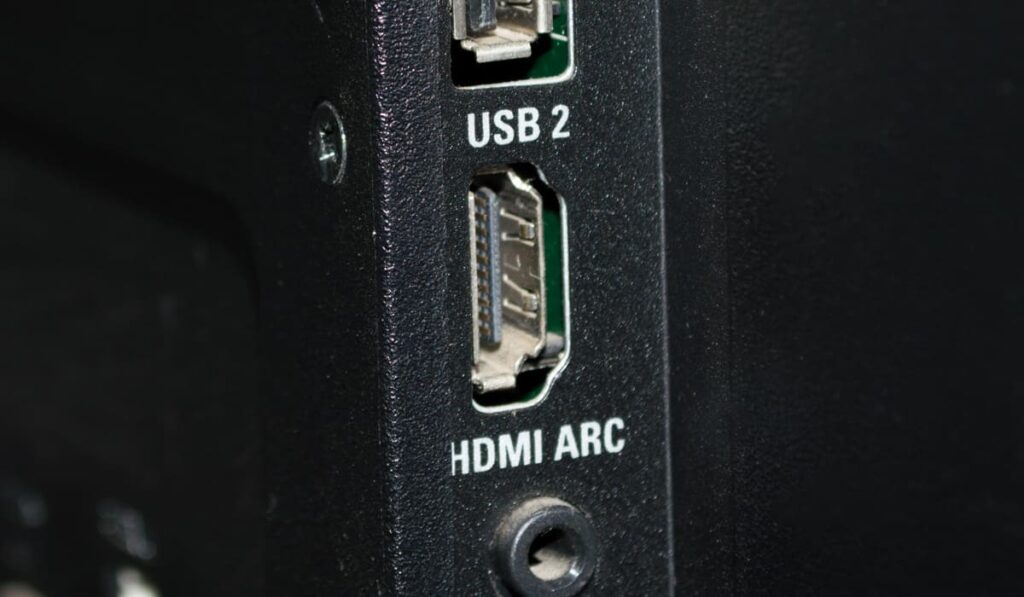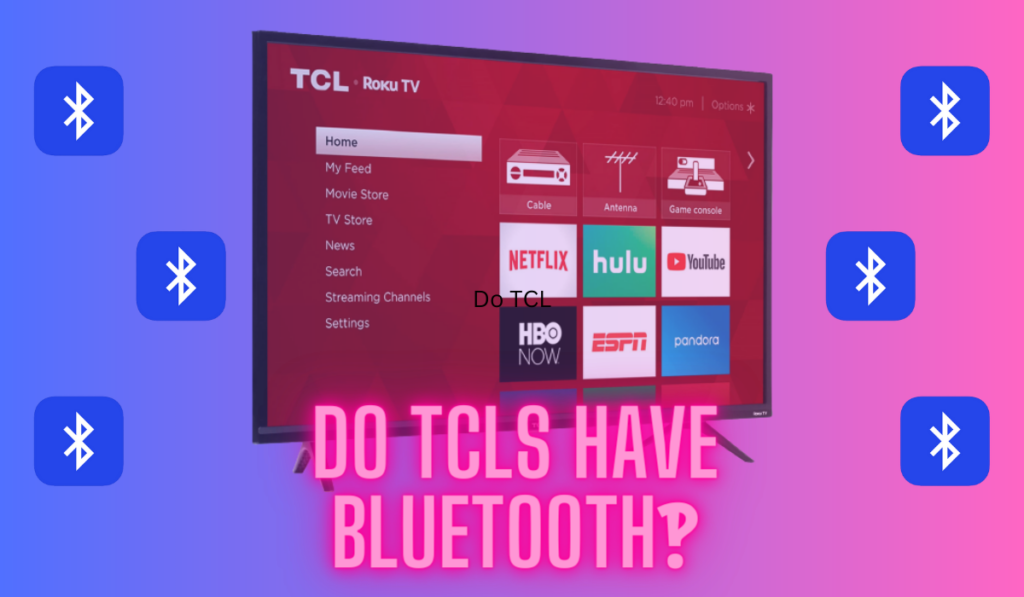Got a dirty TV screen? Just like anything else in your house that sits and collects dust and grime, TV screens need to be cleaned regularly, too. However, with their high price tag and those delicate screens, you may wonder how to clean your TV without damaging it.
To properly clean a TV screen:
- DO
- Power off the TV and components
- Use microfiber cloths
- Use a dry cloth to start
- Be very gentle
- Use gentle cleaners
- Follow your TV manufacturer’s recommended cleaning guidelines
- Clean regularly
- DON’T
- Use harmful cleaning agents
- Spray your cleaning solution on the TV screen
Whether your TV is a 4K HDTV, an 8K HDTV, or a standard HDTV, you’ll want to follow these do’s and don’ts to avoid scratching or damaging your TV. Like cleaning a projector lens (our guide), cleaning you TV is one of the best things you can do to maintain image quality.
Things You Should Do
Power Off the TV and Components
Before cleaning your TV screen, make sure to start by powering off your TV and its components. The dark screen will help you see your dirty spots better and clean more effectively. Also, by powering off your components, you mitigate the risk of causing damage by wiping particles into the connections.
Additionally, you’ll want to make sure that your TV screen is completely dry before powering back on.
Use Microfiber Cloths

- Microfiber glasses cleaning cloth, removes smudges, fingerprints, oils from eyeglasses, electronics, screens, lenses
- Leaves no scratches, streaks, or marks, cleans with little pressure
- Large cloth cleans both large and small surfaces, ultra-fine microfiber, soft, thin, durable
- Individually packaged for easy carrying in pocket, backpack, purse, or eyeglasses case
- Environmentally friendly, reusable, easy to hand wash, quick drying, durable for multiple uses
Microfiber is one of the only safe materials that should be used to clean your TV screen because they are very soft. Make sure to use a lint-free, microfiber cleaning cloth like the Elite Tech Gear Oversized Microfiber Cloths (on Amazon).
There are a ton of materials that are not safe for wiping down your TV screen, including:
- Paper towels
- Kleenex
- Household towels
- Napkins
- Toilet paper
Many of these are commonly used for cleaning other household items and surfaces, but they can scratch your sensitive TV screen.
Use a Dry Cloth to Start
Your first run-through when cleaning your TV screen should be to gently clean off any dust or grime with your dry microfiber cloth. This should remove most spots and stains. To get more stubborn areas, you can use a lightly dampened rag.
Be Very Gentle
Use very little force (or none at all) while removing any smudges or grime from your TV screen. Do not press onto the screen at all. You don’t want to put pressure on the screen while you’re cleaning, or you could damage the pixels and display.
Use Only Gentle Cleaners

- Thin layer of dirt reduces screen clarity, brightness, color accuracy
- Household cleaners can damage sensitive screen surfaces
- Special coatings on screens can be broken down by wrong cleaners
- Safe for all LCD displays, including iOS devices, smartphones, Galaxy tabs
- Alcohol-free cleaning liquid, leaves streak-free finish
- Easily removes fingerprints and grime from screens
After using a dry cloth, water is your best option for removing dirty spots. If that doesn’t work, you can try dish soap diluted with warm water, which is also safe for the screen.
As an alternative, you can choose to purchase a cleaning product made specifically for tech and electronics like the Monoprice Universal Screen Cleaner (on Amazon), but if you pick something else you’ll want to make sure that it doesn’t contain any alcohol, ammonia, or harsh chemicals that are harmful to TVs.
Follow Your TV Manufacturer’s Recommended Cleaning Guidelines
Your TV manufacturer should have guidelines for cleaning and caring for your TV in the manual that you received when you bought it. Following this is your best bet to make sure that you are properly cleaning your TV screen and not harming it in any way. Manufacturers know exactly how to clean their custom-built products and materials.
Clean Regularly
To make sure you are avoiding putting too much pressure on your TV screen, it’s a good idea to add your TV to your regular cleaning list. This way, you can avoid stubborn built-up spots that require additional pressure and avoid any damage. Plus, you’ll love the way your TV looks for a super-clean viewing experience.
Things You Shouldn’t Do
Use Harmful Cleaning Agents
There is a wide range of cleaning products that can be abrasive for your TV screen and aren’t safe while cleaning, including those with ammonia, vinegar, and solvents, such as alcohol, thinners, or benzene. This includes Windex and other window cleaners. These can damage the anti-glare coating on your screen or cause discoloration.
Spray Cleaner on the TV Screen
If your sprayed cleaner or water drips down through the bottom of your TV, you could damage your TV’s internal technology. You’ll want to, instead, dampen your rag with your gentle cleaning solution when wiping any stubborn spots.
Different TV Cleaning Instructions Based on Brand
Depending on your TV brand, it’s important to follow your manufacturer’s instructions when cleaning, since they know exactly what their products are made of and what methods and solutions are safe to use during cleaning. Check your TV’s manual first, but here are some general recommendations from each brand.
Samsung
When it comes to Samsung TVs, the manufacturer’s instructions are very similar to the general recommendations in the article. Samsung recommends powering off your TV first and letting it cool down before.
For cleaning, start with a dry microfiber cleaning cloth, then use only water to dampen the cloth for more stubborn spots. After cleaning, let the screen dry completely before powering back on.
VIZIO
VIZIO TVs come with a special screen-cleaning wipe, and you can purchase additional wipes at a tech store. You can also use a microfiber cloth, and you’ll follow the same instructions as recommended above.
LG
LG recommends cleaning smudges and stains by first turning off and unplugging the TV. LG also provides a screen cleaning cloth to avoid scratching the TV, so use this if you have it.
If not, wipe gently with a dry microfiber cleaning cloth in only one direction and avoid using water or cleaning products if possible. If necessary, slightly dampen your cloth with only water to wipe fingerprints off. Your LG TV’s manual may have additional cleaning instructions.
Sony
To clean your Sony TV screen, make sure to unplug the TV from the outlet beforehand. Clean using only a soft, dry cloth. For stubborn stains, use a slightly dampened soft cloth. Mild soap and warm water is OK to use.
Sony recommends using small circular motions from top to bottom, and then using a soft, dry cloth to dry the screen afterward.
Toshiba
Toshiba recommends the same instructions as above for cleaning its TVs, and only a dry, soft cloth should be used if possible.
Hitachi
Hitachi also follows the same general instructions for cleaning its TVs. It recommends only a highly diluted mix of mild detergent and water for grease and grime that won’t budge with only a dry cloth.
Should You Clean LED, LCD, OLED, and Plasma Screens Differently?
With the many types of TV screens available, you may be wondering if each different type needs to be cared for differently when cleaning. LED, LCD, and OLED TVs have the same screen type, and Plasma TVs have a glass screen. All of these have very touchy anti-glare coatings that need to be handled properly.
No matter what type of TV you have, the same rules apply: use a very soft microfiber cloth, wipe it down very gently, and use only gentle cleaning agents.
Happy cleaning!





